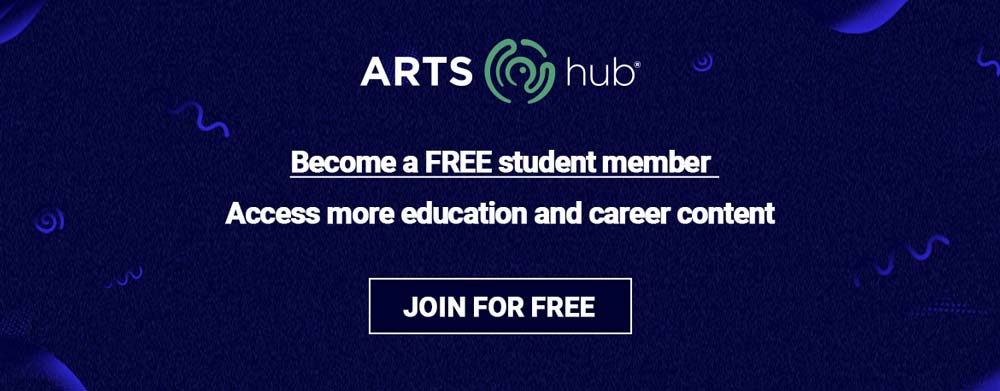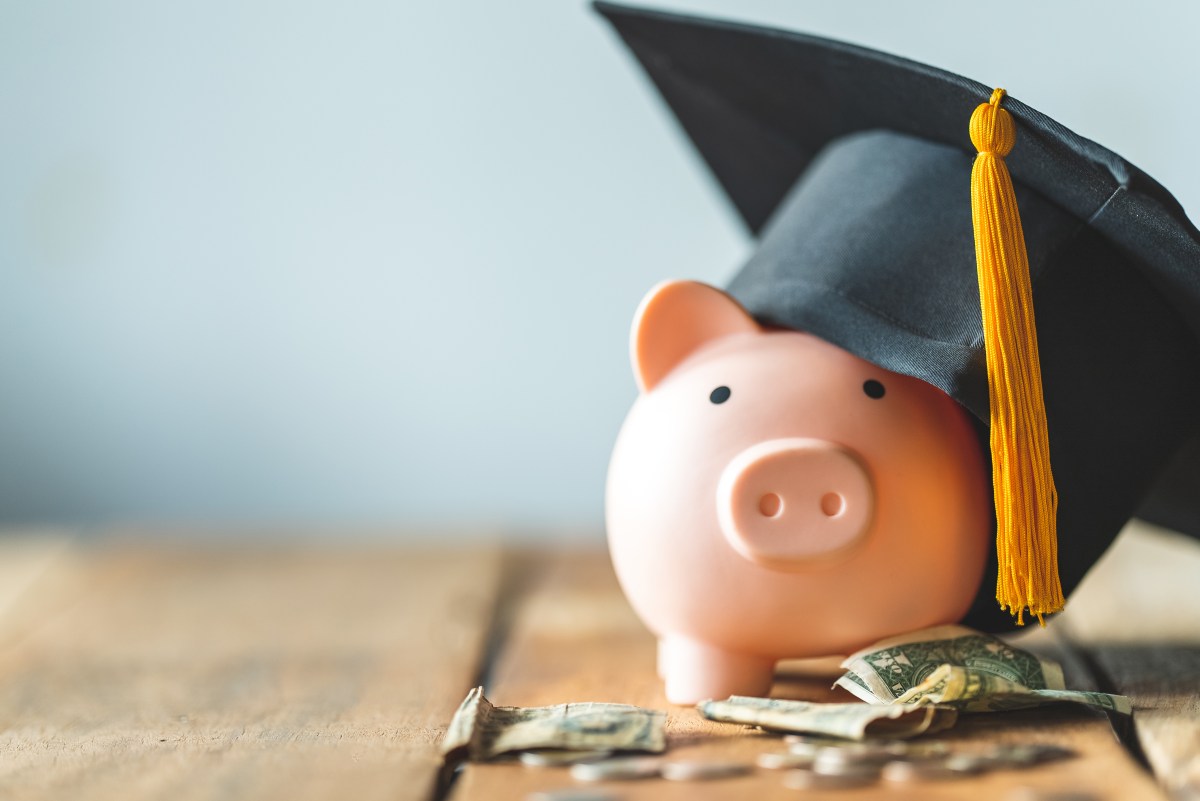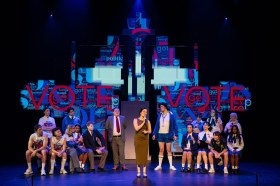As part of ArtsHub‘s renewed commitment to education, this new monthly column will run through some of the headlines we deem biggest for the arts education sector.
Federal Budget
As ArtsHub reported earlier this month, the Federal Budget announced nearly $960 million directed towards reviving Australia’s cultural sector, including support for arts education and training and for the screen sector.
There is an additional $9 million in 2023-24 to go to Australia’s eight national arts training organisations known as the ARTS8 group: the National Institute of Dramatic Art (NIDA), National Aboriginal and Islander Skills Development Association (NAISDA), Australian National Academy of Music (ANAM), Flying Fruit Fly Circus (FFFC), Australian Ballet School, National Institute of Circus Arts, Australian Youth Orchestra and the Australian Film, Television and Radio School (AFTRS).
This funding is intended to: ‘secure critical training courses and skills development and maintain Australian trained in-demand performers and production specialists for Australia’s live performing arts and screen industry and the creative economy more broadly.’ It’s good news for those involved but, really, $9 million divided by eight isn’t very much, is it?
Higher education not a priority
But arts education at universities was not a priority for this year’s Budget, with a focus instead on STEM subjects (science, technology, engineering and maths) and the biggest financial commitment being made to boosting the skilled workforce for Australia’s AUKUS nuclear-powered submarine program. Scary.
As education reporter Tim Dodd from The Australian observed, ‘Higher education was virtually invisible in this budget and, where it did appear, the few measures were targeted very specifically to solve other policy problems.’
Also of interest if you’re following equity and access issues (as reported in the National Tertiary Education Union’s Budget analysis), there’s ‘$17.7 million over four years to fund the Higher Education Disability Support Program – which aims to help students with disability succeed in higher education, including through equipment and materials purchase. However, this measure is offset by savings made in abolishing the National Disability Contact Officer program, which worked across VET [vocational education and training] and HE [higher education].’
Read: Want schools to love what you do? 7 things you need to know
For poor students scrambling for loose change, the increase to income support was welcome but very modest: Youth allowance, AUSTUDY and ABSTUDY will increase by $40 per fortnight and rent assistance will increase by 15% from 20 September 2023.
Meanwhile, as international students flood back to Australia (though still not nearly to pre-pandemic levels), some uni staff have been urged to be landlords for students as the rent crisis threatens the education economy. It’s grim stuff. And even worse than the report in 2019 when a survey of 7000 international students found a quarter were sharing a bedroom with another person who wasn’t their partner, while 3% were hot-bedding.’

Education costs escalate across the board
As noted in The Age, ‘…analysis of the consumer price index shows education fees have escalated in the past 20 years to fill three of the top 10 fastest-growing expenses among 87 categories tracked by the ABS [Australian Bureau of Statistics]’.
Education now accounts for three of Australia’s biggest price rises over the past two decades, with the price of secondary education almost tripling (rising by 185%) since 2003, and the cost of tertiary education rising by 121% in the same period.
Higher fees act as a barrier and create more of a divide between the privileged and the disadvantaged. We would assume that higher fees make it even less likely that students from disadvantaged backgrounds will find their way into arts courses and subjects, though we’d be happy to be proved wrong.
Andrew Norton, Professor in the Practice of Higher Education Policy at ANU, argues in The Conversation that student interests and, within those interests, employment prospects and expected salaries, are the main drivers of course choices. But what is it that drives student interests, especially when it comes to pursuing a creative career? Surely that comes from good arts education at primary and secondary levels.
In case you’re wondering, the Morrison Government’s Job-ready Graduates policy made some degrees cheaper in 2021 for those jobs considered ‘national priorities’ to attract students, while other subject prices were increased to deter them.
Norton reports that, ‘The cheapest annual charge for a 2023 full-time student is $4124 for nursing, teaching and agriculture. Engineering, science, IT, allied health and performing arts cost $8301. Students in medicine, dentistry and veterinary science pay $11,800. The highest rates are for law, business and most arts disciplines, set at $15,142.’
That mention of performing arts right in the middle bracket is a bit of a mystery, but a welcome one. It’s still not cheap.
More universities ordered to backpay sessionals
La Trobe University has been ordered to pay casual academics $2 million for ‘wage theft’. The NTEU (National Tertiary Education Union) estimates more than $100 million in unpaid wages is owed to casual academic staff in Australia.
For a deeper dive, and a depressing read about the exploitation of bright minds, read this investigation by The Sydney Morning Herald, about Australia’s university wage theft machine.
It’s no wonder there is ongoing industrial action at many universities right now, and that in acknowledgment of a broken system, there’s currently a federal review underway where the Government is calling for ideas to ‘reshape and reimagine higher education, and set it up for the next decade and beyond’. A draft report is due in June, and a final report in December 2023. The Conversation is publishing a series of excellent articles around this.
Student HECS and HELP debts increased 1 June
Indexation of 7.1 per cent — the highest in more than three decades — has been applied to more than $74 billion in outstanding HECS-HELP and vocational education loans. This means that the average $25,000 HECS-HELP debt will rise by $1,775 because of indexation. Just for context, indexation has averaged 2 per cent per year over the past decade. While the government doesn’t charge interest on student loans, the original loan is indexed to inflation. Combined with the increasing costs of education (see above), many students are wondering if they’ll ever get out of debt.
[This article was originally published 22 May and was updated 2 June 2023.]





